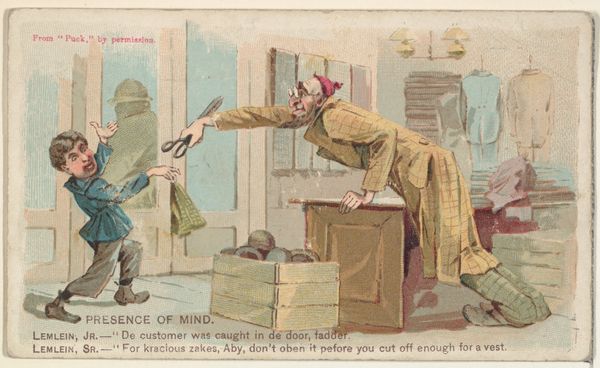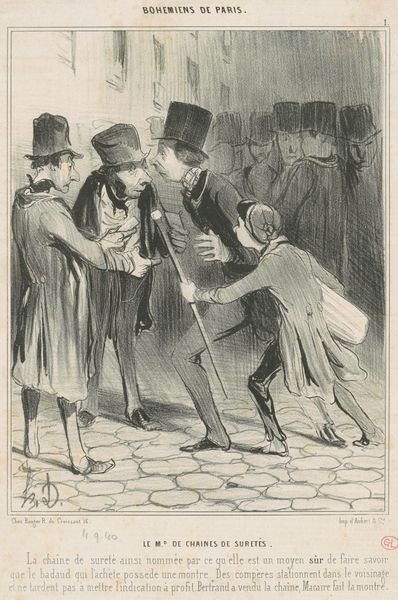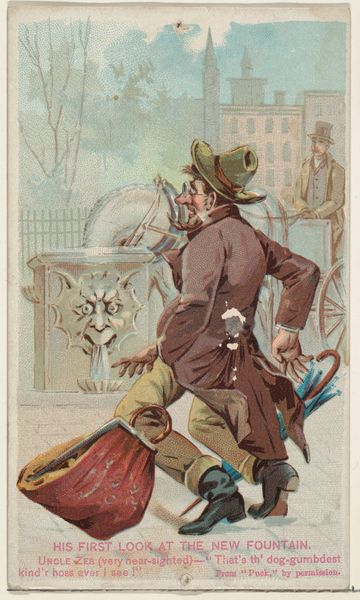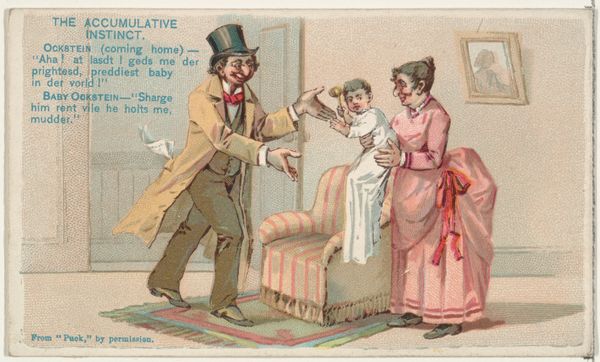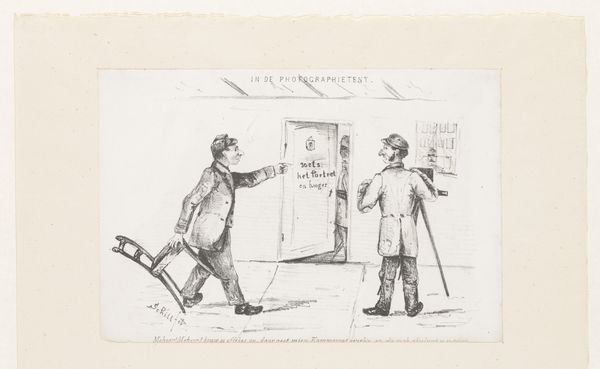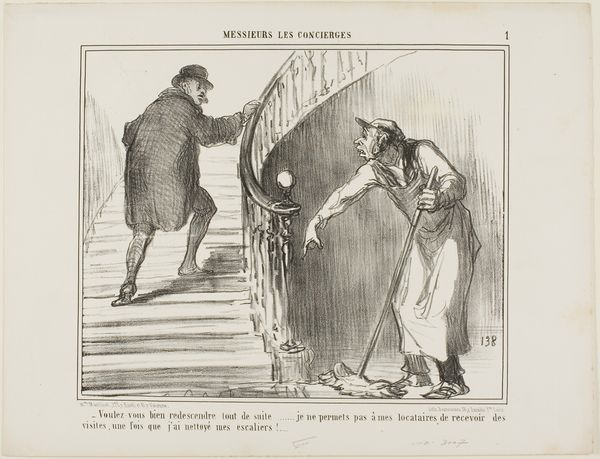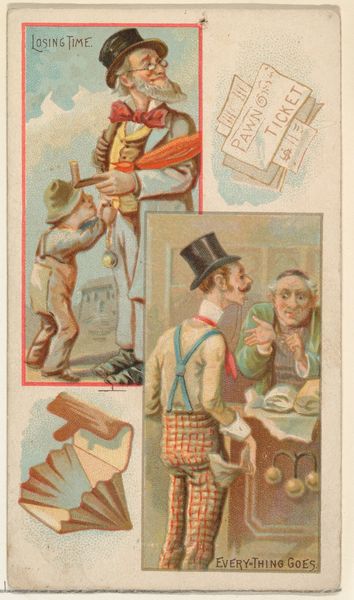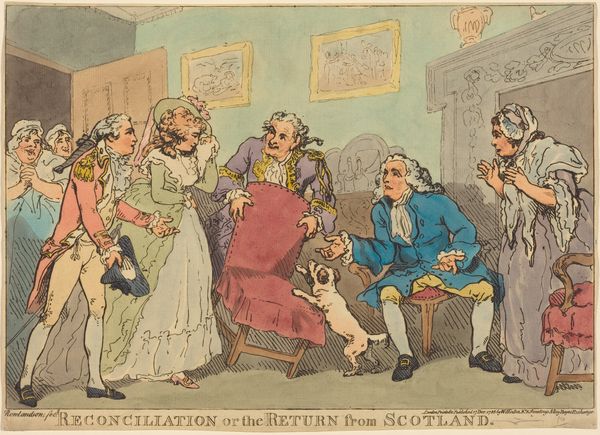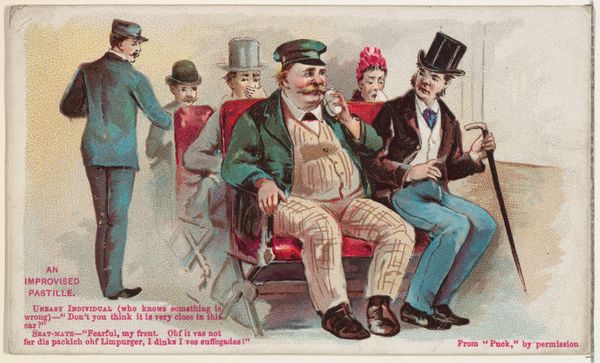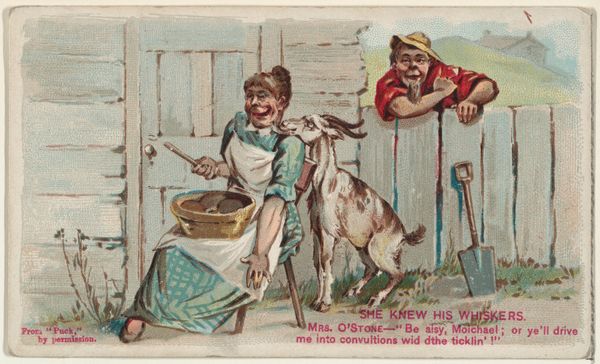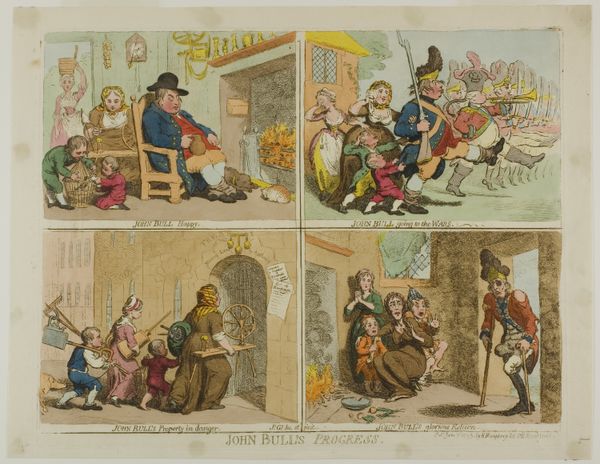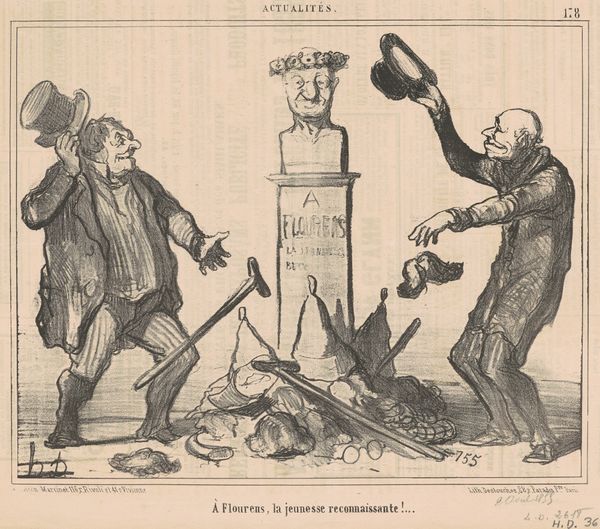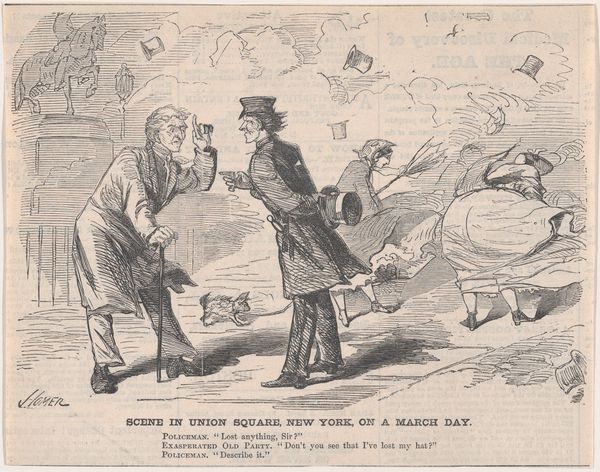
A Crack at the Truth, from the Snapshots from "Puck" series (N128) issued by Duke Sons & Co. to promote Honest Long Cut Tobacco 1888
0:00
0:00
Dimensions: Sheet: 2 1/2 × 4 3/16 in. (6.4 × 10.6 cm)
Copyright: Public Domain
Editor: This lithograph, titled "A Crack at the Truth," from 1888 by W. Duke, Sons & Co., seems to capture a comical scene. The illustration's got a bunch of figures reacting to a mishap involving what I think is an early form of public transportation. It's crowded and almost feels like a commentary. How do you interpret this work? Curator: The keyword here is, as you pointed out, "commentary." We need to understand that this piece isn't just a funny snapshot. Think about the context: it's the late 19th century, urbanization is booming, and you've got all this class conflict bubbling up alongside technological advancement. Do you see how the artist uses caricature? Editor: I do see that. Some of the figures are definitely exaggerated. There's a working-class figure with a shovel that looks like he's mocking the situation and another gentleman who is richly dressed, maybe bewildered. Curator: Exactly! Consider how this reflects anxieties about the changing social order. The broken-down "Broadway Arcade" car becomes a symbol, doesn't it? It embodies the disruption caused by these new technologies and how they are failing to deliver on their promises equally for everyone. We see this class division play out in these caricatures as they navigate a landscape that’s literally broken. Who is benefitting from the "truth," and whose progress is stilted? Editor: I never thought about it that way, seeing the broken-down vehicle as a metaphor. It really makes you consider who progress is actually for and who gets left behind. Curator: Precisely. By connecting the image to broader socioeconomic themes, we can peel back the layers of this seemingly simple illustration and access insights into its meaning and cultural significance. Editor: This really changes how I view not just this lithograph but other artworks that seem "simple." There's so much more to unpack when you start thinking about social context.
Comments
No comments
Be the first to comment and join the conversation on the ultimate creative platform.

